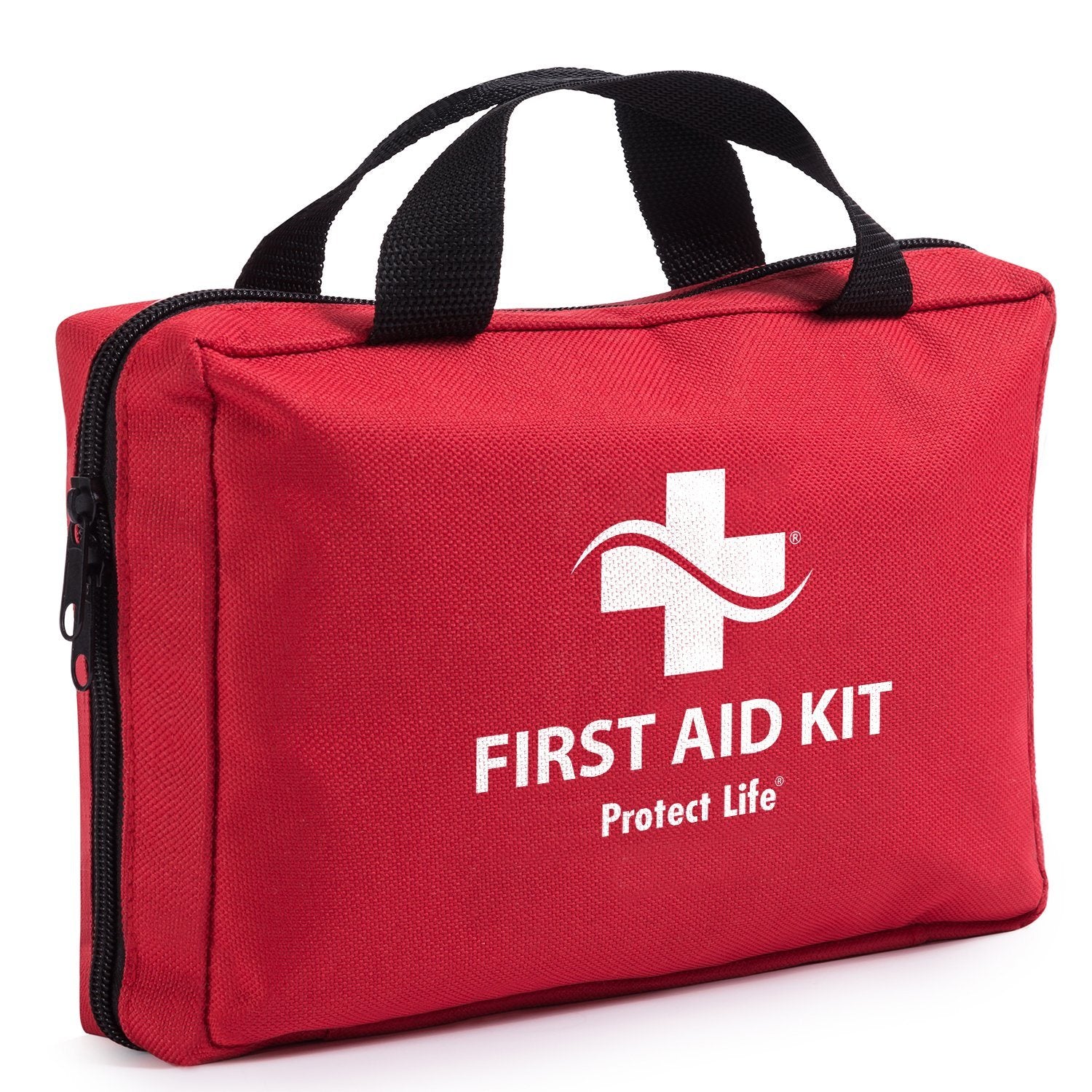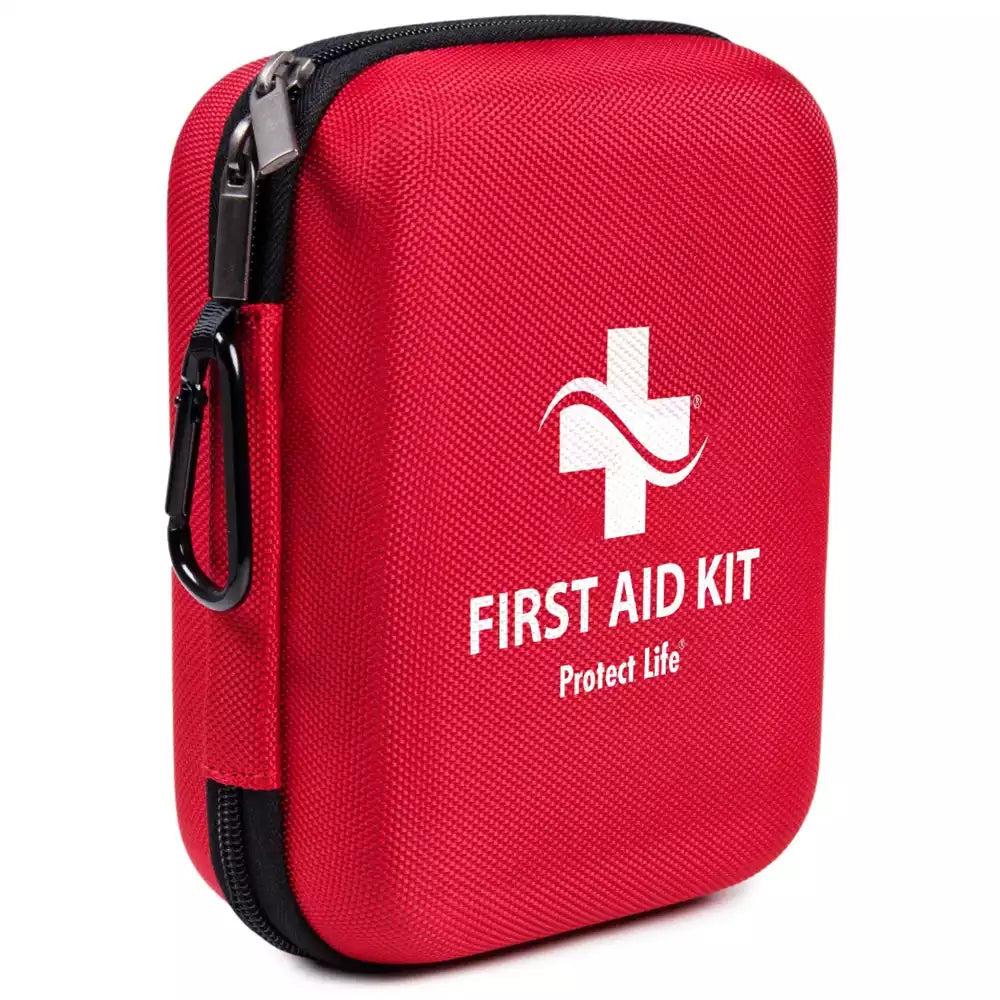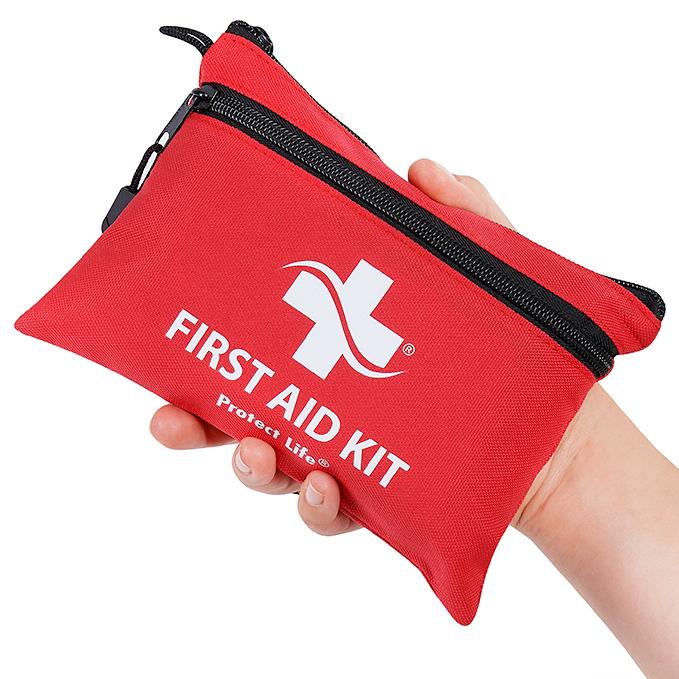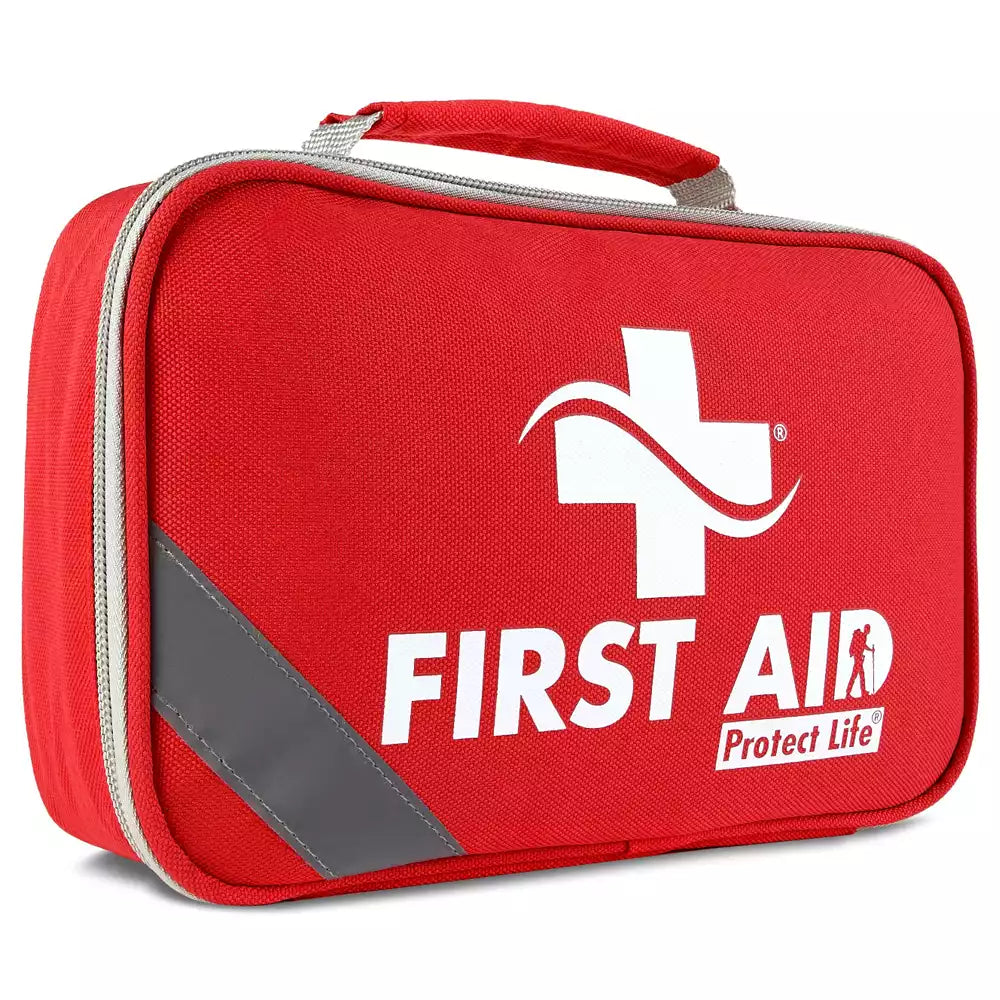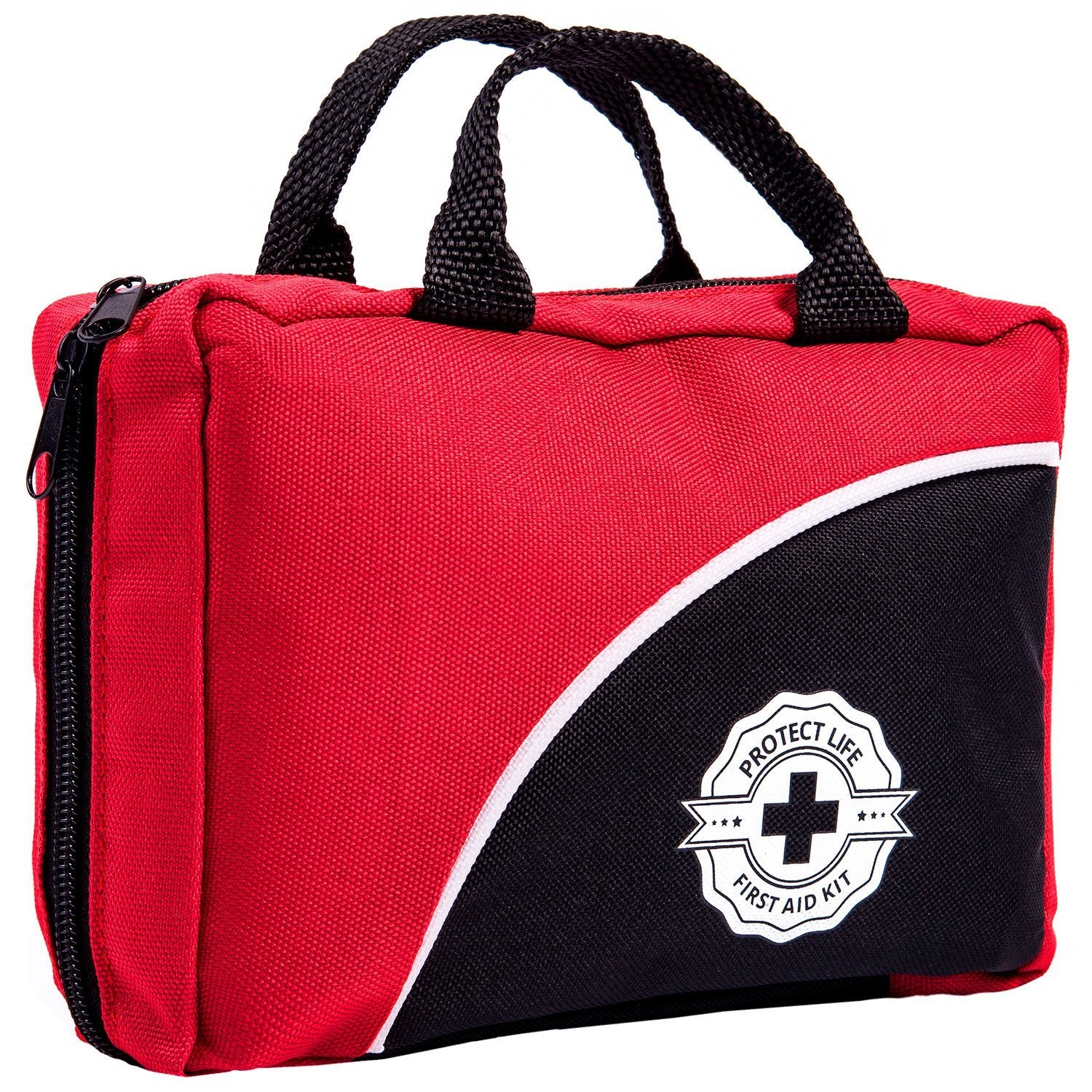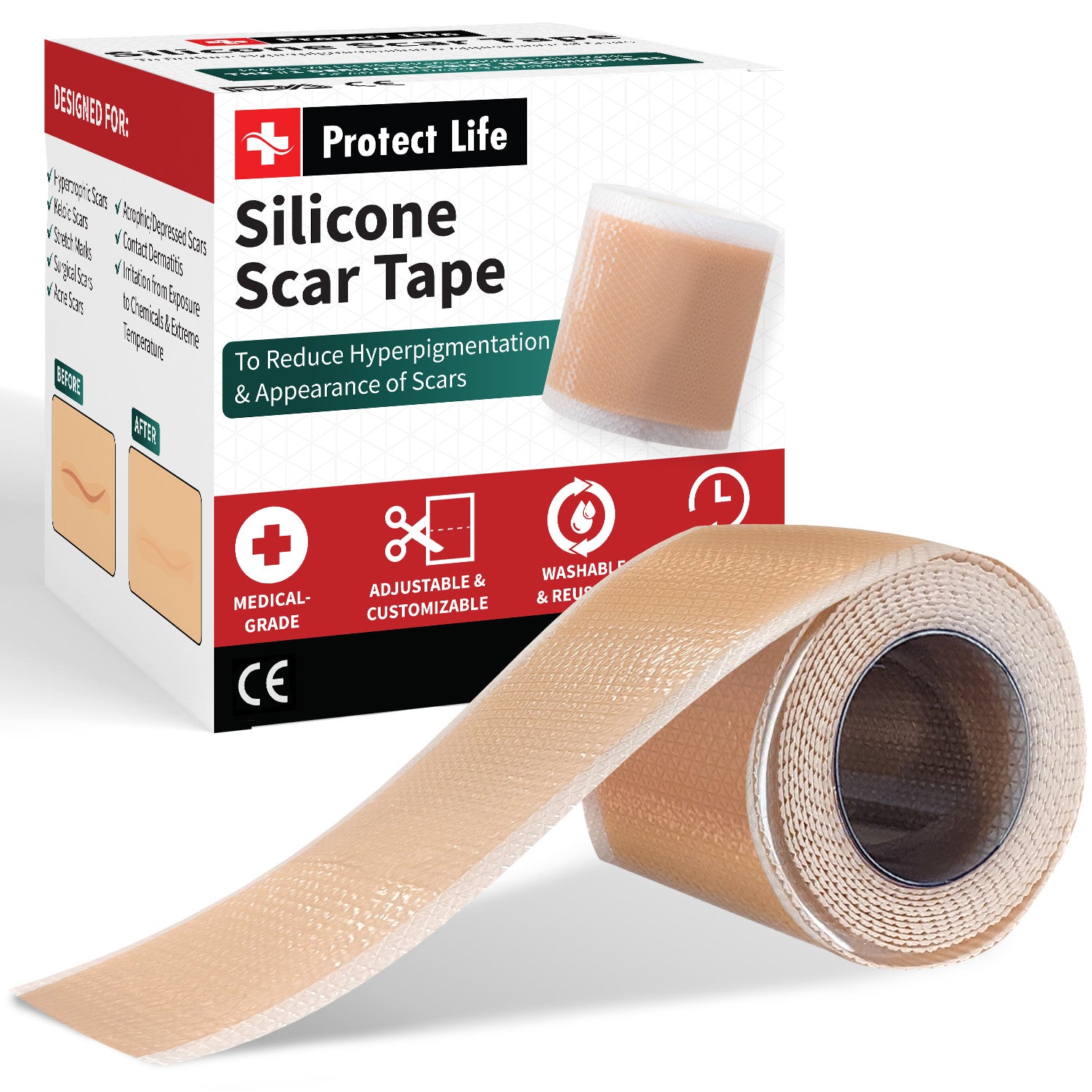What should you do when your pet needs first aid as soon as possible, and you are far away from a veterinarian? Our first aid experts teamed with a team of veterinarians which helped us identify the most common emergencies and gave us some quick tips you can use for handling different emergency ailments before you bring your pet into a veterinarian. Post this list in an easy-to-find place and refer to it in an emergency.
Use Our First Aid For Cats and Dogs
All these procedures are meant to help you stabilize your pet in a medical emergency, and are not a substitute for proper veterinary assessment and treatment. You should always contact your veterinarian if your pet has a medical emergency.

You can use any of our first aid kit for cats and dogs and take from it the necessary medical items to take care of your pet.
Bite Wounds
If another animal bites your pet, the wound will probably appear red or blue, and the area around the bite will become swollen. Your pet may experience some lethargy or loss of appetite, and may even run a fever.
To stabilize a bite wound, do the following:
o Approach the pet carefully to avoid getting bitten or scratched.
o Muzzle your pet if necessary. Even the most even-tempered pets can resort to aggression when hurt or scared.
o Check the wound for contamination or debris. If significant debris is present, clean the wound with large amounts of saline, balanced electrolyte solution or water as a last resort.
o Wrap large open wounds to keep them clean using a bandage
o Apply pressure to profusely bleeding wounds. Do not use tourniquets.
o Bite wounds often become infected and need professional care. Wear gloves when possible.
o Call your veterinarian as soon as you have your pet stable and under control.
You can use any of the above items from your regular first aid kit: we recommend using the metal tweezers to remove debris, a suitable bandage according to the size of your pet (our first aid kits come with different sizes of conforming bandages) and even a wound pad or dressing.
Bleeding
Bleeding can be caused by some things such as an animal bite or another injury. To stabilize bleeding, do the following:
o Apply firm, direct pressure over the bleeding area until the bleeding stops.
o Hold the pressure for at least 10 minutes (continually releasing the pressure to check the wound will hamper the clotting).
o Avoid bandages that cut off circulation.
o Take your pet to the veterinarian if the bleeding is severe or if you cannot stop the blood flow. Your pet may need to have the wound cleaned and sutured by a professional.
Even if you are on the road, you can reach your car first aid kit and use the disposable gloves and open a wound dressing and a regular bandage on the injury respecting the specialists' instructions.
Burns
Household chemicals, appliances, hot water or fires can cause burns to your pet. Your pet's skin may become inflamed or charred, and the area around the burn will probably swell.
To stabilize a burn, do the following:
o Large quantities of dry chemicals should be gently brushed off the animal. Water may activate some dry chemicals. Once chemicals are removed, flush the burn with large amounts of cool, running water.
o Apply an ice pack for 15-20 minutes. Do not place an ice pack directly on the skin. Wrap the ice pack in a light towel or cover.
o Do not apply ointment or other substances to the burn.
o Wrap the burned area in a non-stick bandage and call your veterinarian.
Take from your Protect life first aid kit a pair of disposable gloves to prevent cross-contamination, the disposable cold compress which can be used in a matter of seconds to help alleviate the pain and afterward apply the first aid non-adherent pad, which will not stick to the wound, nor leave residue inside the wound bed.
Choking
If your pet has stopped breathing, is having difficulty breathing or is making noises while breathing, he or she may be choking. Choking can occur as a result of a foreign object, vomiting or another injury. To stabilize a choking pet, do the following:
o Protect yourself from a frantic pet likely to bite.
o If the pet can partially breathe, it is best to keep the animal calm and get to a veterinarian as quickly as possible.
o Look into the mouth to see if a foreign object is visible in the throat. If possible, clear the airway by removing the object with pliers or using the tweezers from your home first aid kit, being careful not to push it down the throat.
o If a foreign object is lodged too deep or if the pet collapses, then place your hands on both sides of the animal's rib cage and apply firm, quick pressure. If that does not work, place the animal on its side and strike the side of the rib cage firmly with the palm of your hand three or four times. Repeat this procedure until the object is dislodged or arrive at the veterinarian's office.
Fractures
Any type of fall, accident or fight can lead to broken bones. Typically, an animal will favor the broken bone and will show signs of distress. Swelling and bruising may also accompany a broken bone. To stabilize a broken bone, do the following:
o Muzzle the pet and look for bleeding.
o If you can control bleeding without causing more injury, then do so.
o Watch for signs of shock.
o Do not try to set the fracture by pulling or tugging on the limb. Transport the pet to the veterinarian immediately, supporting the injured limb as best you can.
To control bleeding caused by fractures, wear your gloves from your Protect life first aid kit and stop the bleeding using the sterile gauze pads.

Poisoning
Pets can be poisoned by the things they eat or inhale, or they can come into contact with poisonous materials. If your pet has been poisoned, he or she may begin to act strangely or may experience seizures, diarrhea or vomiting.
To stabilize a poisoned pet, do the following:
o Record what the pet ingested and how much. Immediately call your veterinarian or the ASPCA Animal Poison Control Center at (888) 426-4435.
o Do not induce vomiting.
o If toxins or chemicals get on the animal's skin, find out how to remove and wash them off by reading the directions on the package of toxins or chemicals.
Seizures
Animals can experience seizures for a variety of reasons. Seizures can be caused by brain tumors, illnesses, poisoning or other conditions. Before a seizure, your pet will probably act anxious and may look as if he or she is staring into space. After the seizure, your pet may experience temporary blindness.
To stabilize a pet that is having a seizure, do the following:
o Move the pet away from any objects that could be harmful.
o Use a blanket for padding and protection. Do not put yourself at risk by restraining the pet during the seizure.
o Time the seizure. They usually last only two to three minutes.
o Afterward, keep the animal calm and quiet.
If you are away from home and don't have anything in hand to help protect your pet, open your travel first aid kit and use the emergency blanket to protect your cat or dog during and after its seizure.

Shock
Animals, like people, can experience shock after traumatic episodes or severe blood loss.
To stabilize a pet that is in shock, do the following:
o Keep the animal gently restrained, quiet and warm, with lower body elevated.
o Call your veterinarian if severe blood loss has occurred or if the pet has been injured in any other way.
If you are away from home, while traveling or camping, using an emergency blanket top keep your pet warm might be a relief until you reach your pet's doctor.
Vomiting
Vomiting can be a symptom of both mild and serious illnesses. Often a pet will stop vomiting after a few days. To stabilize a vomiting pet, do the following:
o Try to remember if the pet ate something strange that could be causing the vomiting.
o Withhold food for 12-24 hours.
o Give ice cubes for two hours after vomiting stops.
o Slowly increase the amount of water and foods given over a 24-hour period. Your veterinarian may recommend feeding your pet a special diet, such as boiled ground beef and rice, for a few days.
o Call your veterinarian to determine if your pet needs to be professionally examined. He or she can also help you to identify the cause of the vomiting.
Choosing to create yourself or buy a specific first aid kit for your cat or your dog is a personal decision, but if an emergency occurs, you can always use most of the items which you'll find in your Protect Life first aid kit to help your beloved pet until you seek medical attention.
Choosing to create yourself or buy a specific first aid kit for your cat or your dog is a personal decision, but if emergency occurs you can always use most of the items which you’ll find in your Protect Life first aid kit to help your beloved pet until you seek medical attention.



